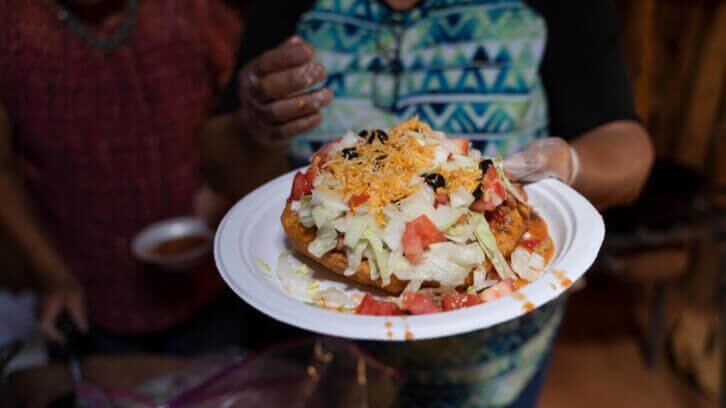On behalf of both the Health Equity Working Group and the Food Pattern Modeling and Data Analysis subcommittees, Valarie Blue Bird Jernigan, DrPH, MPH pointed out that some population groups were not adequately represented within the Health Equity Working Group’s diet simulations and will conduct research to “enhance the evaluation of these draft dietary patterns,” noting that American Indian and Alaska Native groups will be evaluated in the pilot study. This is the first time the DGAC will perform diet simulations in this context.
Further, DGAC will leverage insight from USDA Center for Nutrition Policy to “identify food and beverages that are integral to and included … in the food ways of about 20 different population groups,” Jernigan elaborated.
The pilot will identify foods that are integral to American Indian and Alaska Native cuisines, separately, and will be implemented in the dietary guidelines and federal programs.
Jernigan also noted that the food selection in these groups, who face significant barriers to federal nutrition programs and experience higher rates of diet-related diseases will align with the White House National Strategy on Hunger, Nutrition and Health to “support sovereignty, improve access to traditional foods and ensure tribal communities are equitably served in federal programs.”
The pilot program will include insights from experts with both heritage and professional dietary and nutrition experience in American Indian and Alaska Native foodways, highlighting the critical importance of providing relevant cultural and scientific support towards these groups’ distinct nutrition and health needs, and setting a precedent for DGAC’s work towards developing effective and culturally appropriate interventions for other groups.
Each expert within each cultural group will review and identify three categories of importance for each population: foods that are integral to the cuisine, foods that are eaten but not integral (and do not hold the same cultural significance as the first category) and foods that are never consumed.
Simulations for foods labeled as “integral” and “eaten but not integral” will be run separately for each population, Jernigan noted.
Jernigan highlighted that the pilot will serve as a proof-of-concept to test a process for developing more inclusive food intake patterns, and while it will not be fully representative of all tribal groups or the diverse U.S. population, experts intend for the simulation to provide a realistic and accurate reflection of what foods are eaten and deemed culturally important.
Building a culturally relevant food pattern model
Along with classifying foods as integral, secondary or excluded from the cultural cuisine, key steps in building recommendations include simulating diets for each age and sex group using randomly selected foods from each group/subgroup; calculating the energy and nutrient intake from each simulated diet to analyze the overall distribution across the population; and comparing food intake distribution to established nutritional goals, Dr. Chris Taylor, food pattern modeling subcommittee, explained.
“Instead of what we looked at with food pattern modeling, which was based on what is most commonly consumed, we are going to look at all of the foods and having an equal probability of being included of the nutrient dense foods; whereas foods that were higher in saturated fat and added sugars have a lower probability of being selected,” Taylor elaborated, highlighting the method which will provide a broader selection of available foods.




